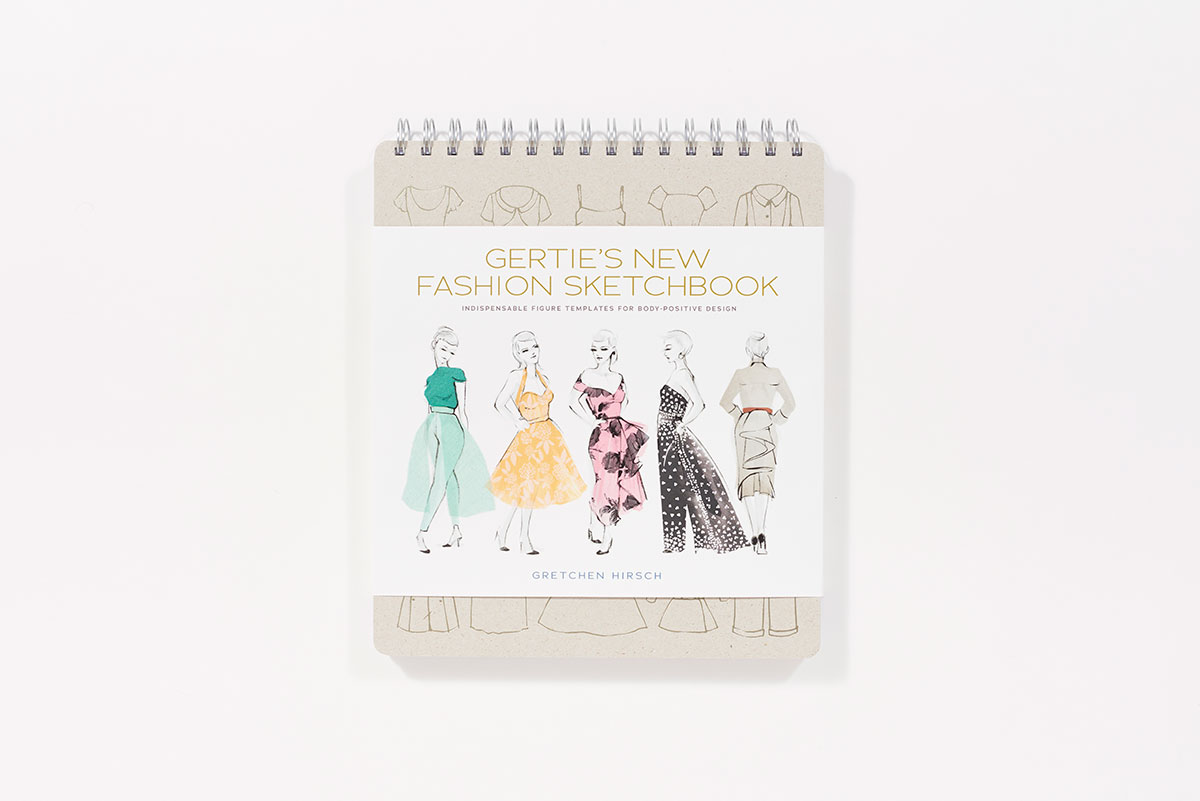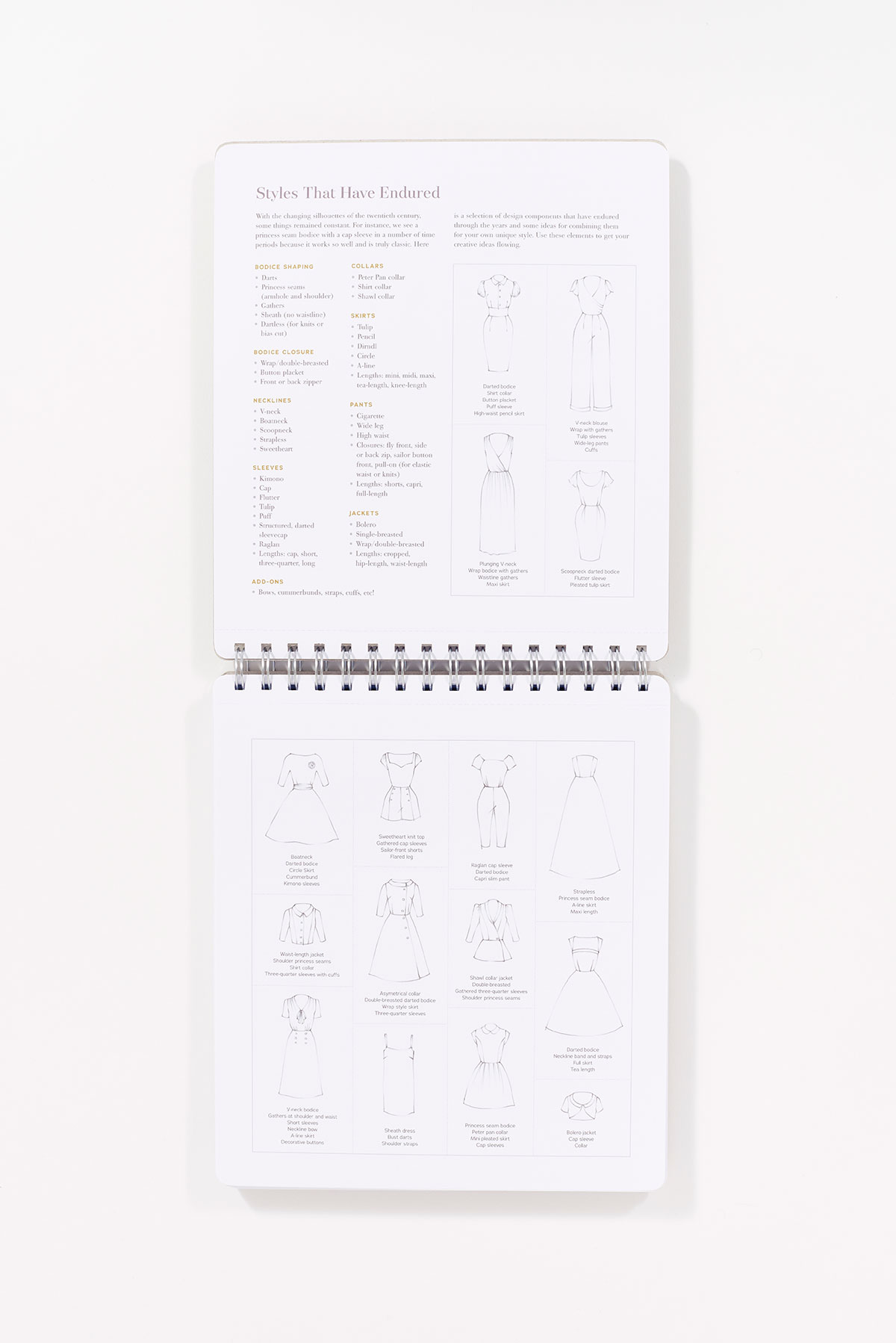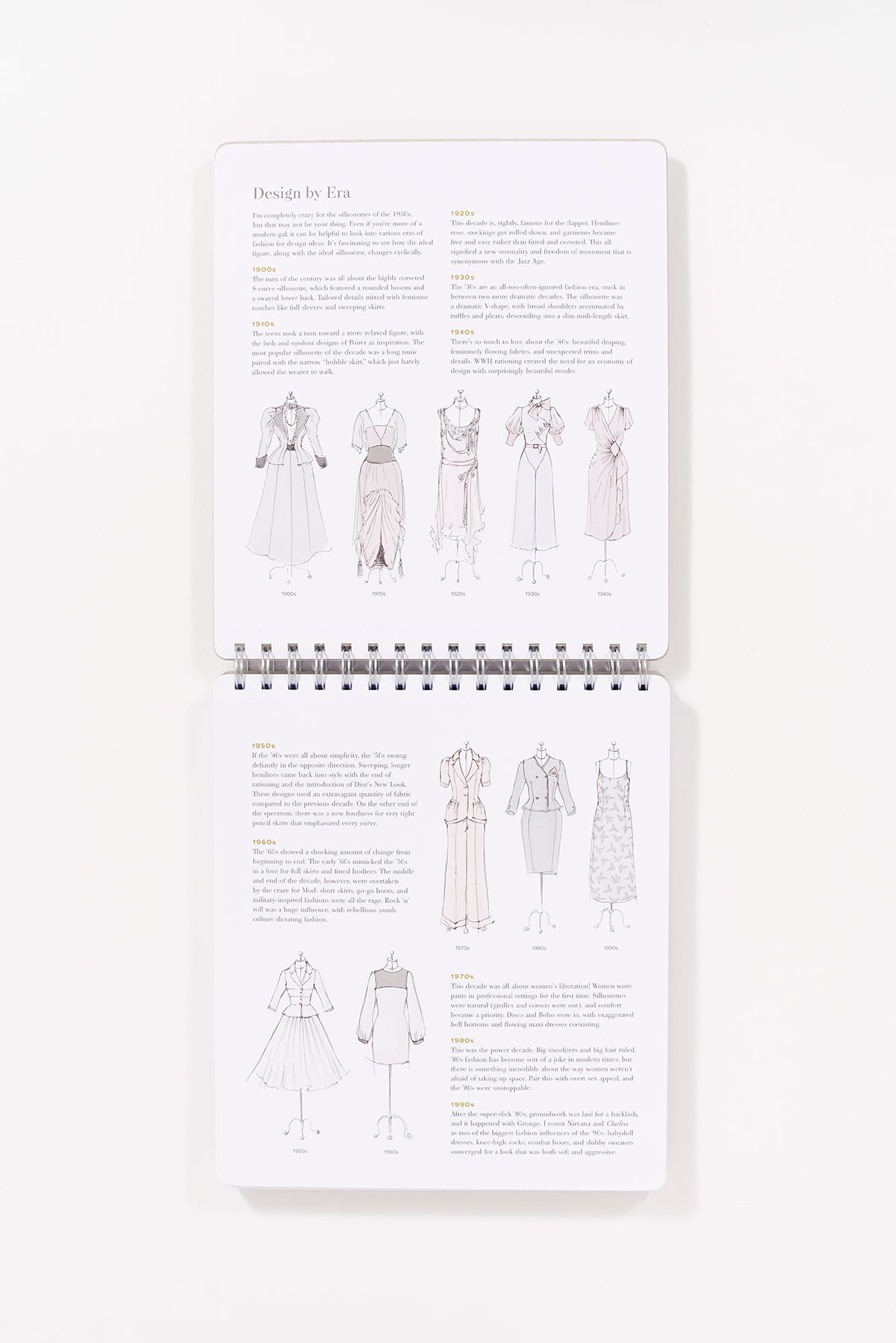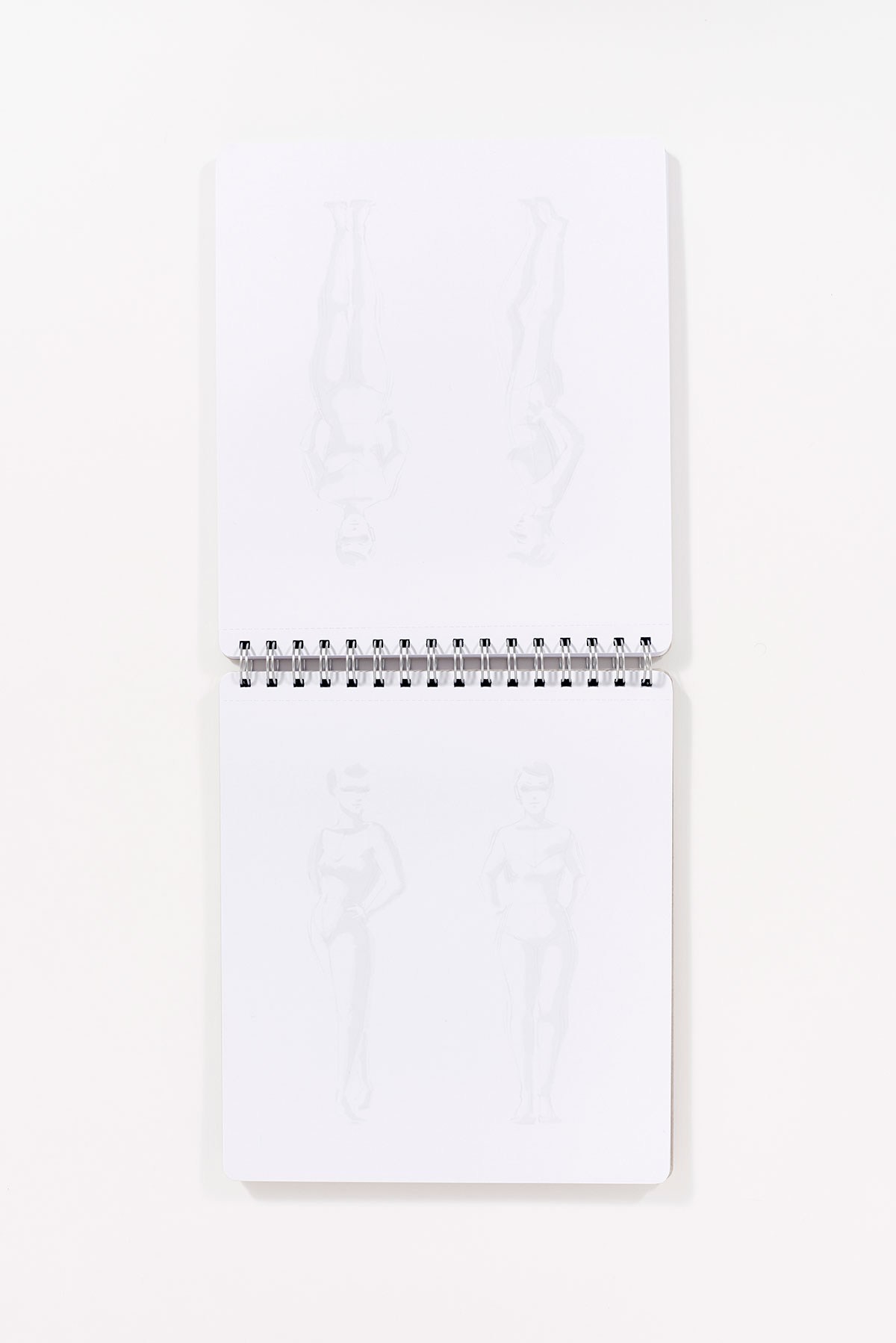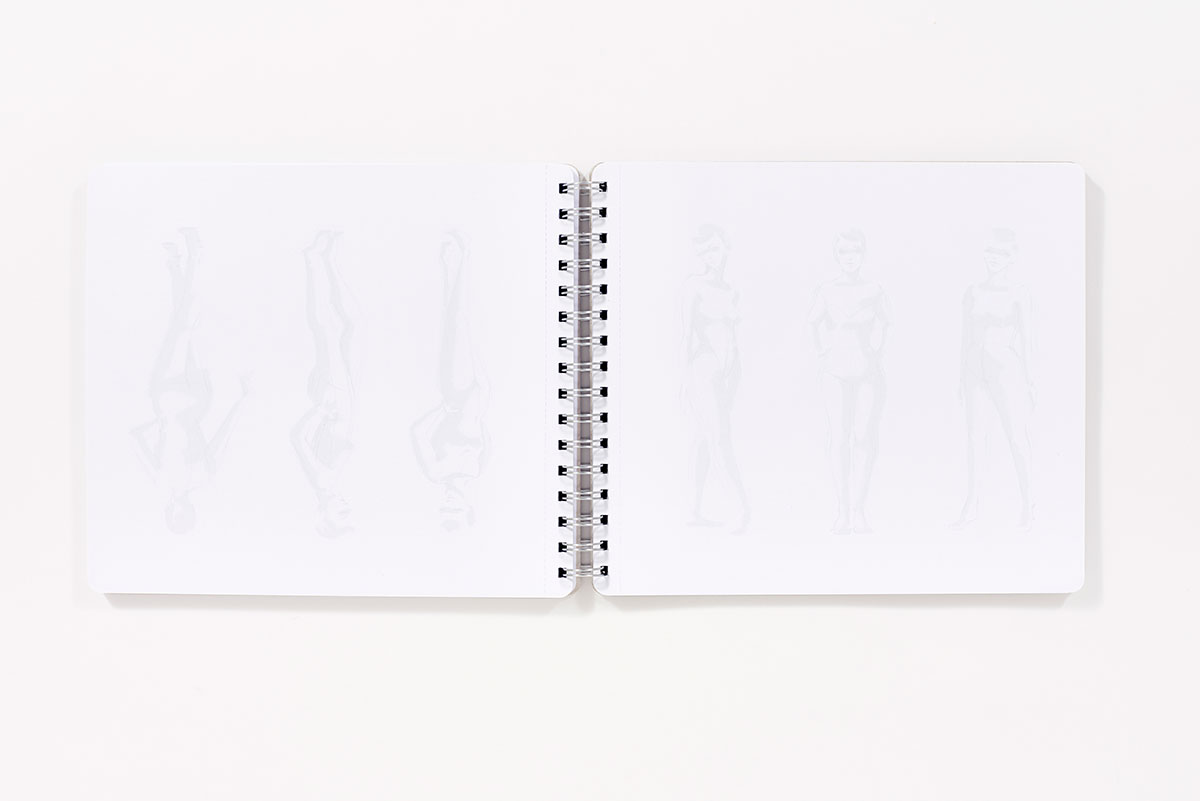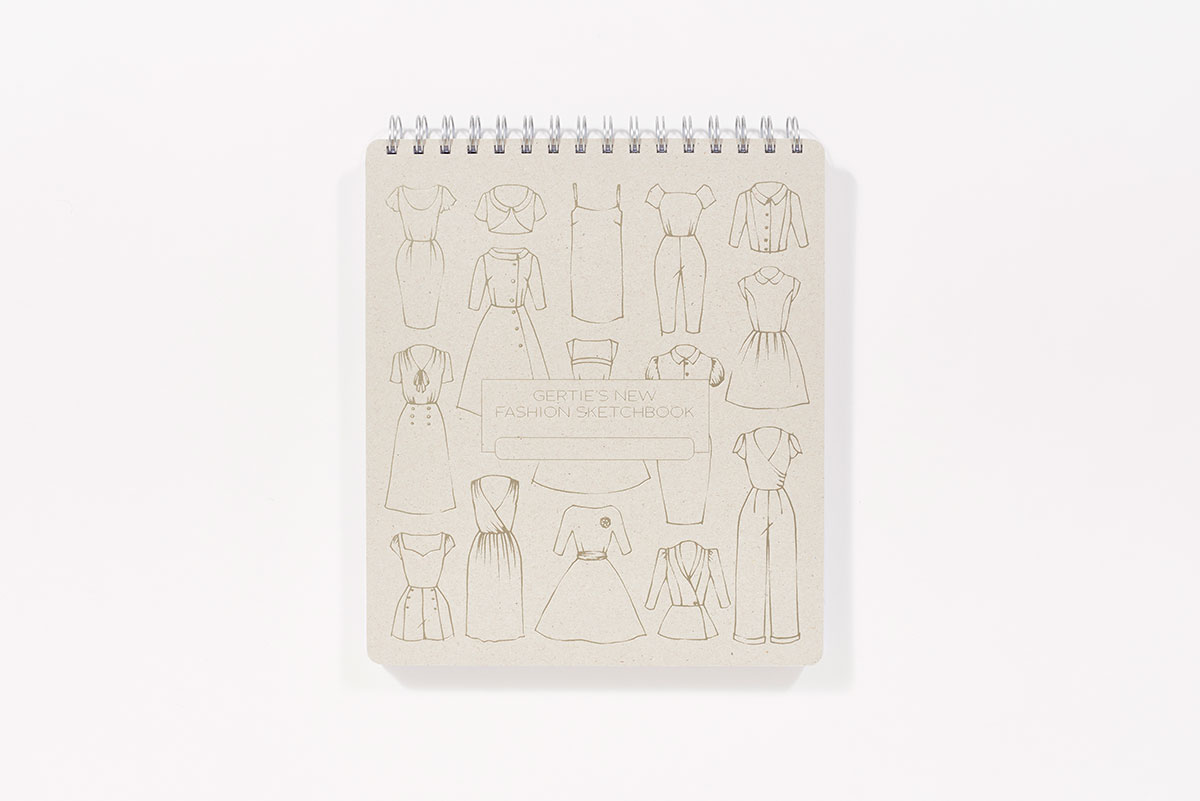I’m so excited about the release of my new book, Gertie’s New Fashion Sketchbook! Over the past several years, I’ve been busy writing sewing technique books with an emphasis on retro design (see Gertie’s New Book for Better Sewing and Gertie Sews Vintage Casual), so this is a bit of a departure for me. Today I’m going to share the inspiration for the sketchbook and why it was such an important project for me.
Sewists often think of sketching as something that “real” designers do. But everyone who sews is a designer! The simple act of matching a fabric to a pattern is designing. Even picking out a zipper is a design choice. Every choice you make on a project is part of its design. With so many little decisions to make, it’s easy to get overwhelmed. That’s why sketching is such a helpful tool: you can map out your ideas visually, easily changing them if necessary.
A wonderful tool for sketching fashion ideas is the croquis, a body figure template. That way you don’t have to be able to sketch a realistic figure from scratch! And nowadays it’s easy to go to a bookstore and buy a fashion sketchbook filled with croquis, ready to go. However, the problem with the available fashion sketchbooks is that the figures can look a little bizarre: they’re strangely elongated and spindly, and twisted into strange poses that I like to call the "broken doll" or the "sad alien." That's because fashion people work with a concept called "nine heads," where the figure is nine head-lengths tall. To put this in perspective, actual people are only seven to eight heads tall. Here's an interesting image that breaks it down:
Source: knowledgebuffer.wordpress.com
One of my missions over the years has been to write about sewing and fashion in a body-positive, feminist way. So these nine-head ladies were bringing me down. And so the idea for this sketchbook was born and brilliant illustrator Sun Young Park brought it to life. Here's how it works:
The figures are presented in a "nested" configuration (almost like a sewing pattern!), so that you can follow the lines (bigger or smaller) to represent different figures. You can make the figures smaller on top or bottom to replicate a woman's actual curves and proportions. I tested the whole thing out with some wonderful sewing friends, and it really works! But my favorite thing about it is that the height of the figures is actually realistic. And that’s a beautiful thing.
Do you enjoy sketching ideas for your sewing projects? If so, I hope you love this new sketchbook!


